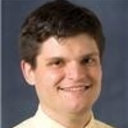Optic nerve head edema among patients presenting to the emergency department.
Palabras clave
Abstracto
OBJECTIVE
To determine the frequency of and predictive factors for optic nerve head edema (ONHE) among patients with headache, neurologic deficit, visual loss, or elevated blood pressure in the emergency department (ED).
METHODS
Cross-sectional analysis was done of patients with ONHE in the prospective Fundus Photography vs Ophthalmoscopy Trial Outcomes in the Emergency Department (FOTO-ED) study. Demographics, neuroimaging results, management, and patient disposition were collected. Patients in the ONHE and non-ONHE groups were compared with bivariate and logistic regression analyses.
RESULTS
Of 1,408 patients included, 37 (2.6%, 95% confidence interval 1.9-3.6) had ONHE (median age 31 [interquartile range 26-40] years, women 27 [73%], black 28 [76%]). ONHE was bilateral in 27 of 37 (73%). Presenting complaints were headache (18 of 37), visual loss (10 of 37), acute neurologic deficit (4 of 37), elevated blood pressure (2 of 37), and multiple (3 of 37). The most common final diagnoses were idiopathic intracranial hypertension (19 of 37), CSF shunt malfunction/infection (3 of 37), and optic neuritis (3 of 37). Multivariable logistic regression found that body mass index ≥35 kg/m2 (odds ratio [OR] 1.9, p = 0.0002), younger age (OR 0.5 per 10-year increase, p < 0.0001), and visual loss (OR 5, p = 0.0002) were associated with ONHE. Patients with ONHE were more likely to be admitted (62% vs 19%), to be referred to other specialists (100% vs 54%), and to receive neuroimaging (89% vs 63%) than patients without ONHE (p < 0.001). Fundus photographs in the ED allowed initial diagnosis of ONHE for 21 of 37 (57%) patients. Detection of ONHE on ED fundus photography changed the final diagnosis for 10 patients.
CONCLUSIONS
One in 38 patients (2.6%) presenting to the ED with a chief complaint of headache, neurologic deficit, visual loss, or elevated blood pressure had ONHE. Identification of ONHE altered patient disposition and contributed to the final diagnosis, confirming the importance of funduscopic examination in the ED.


